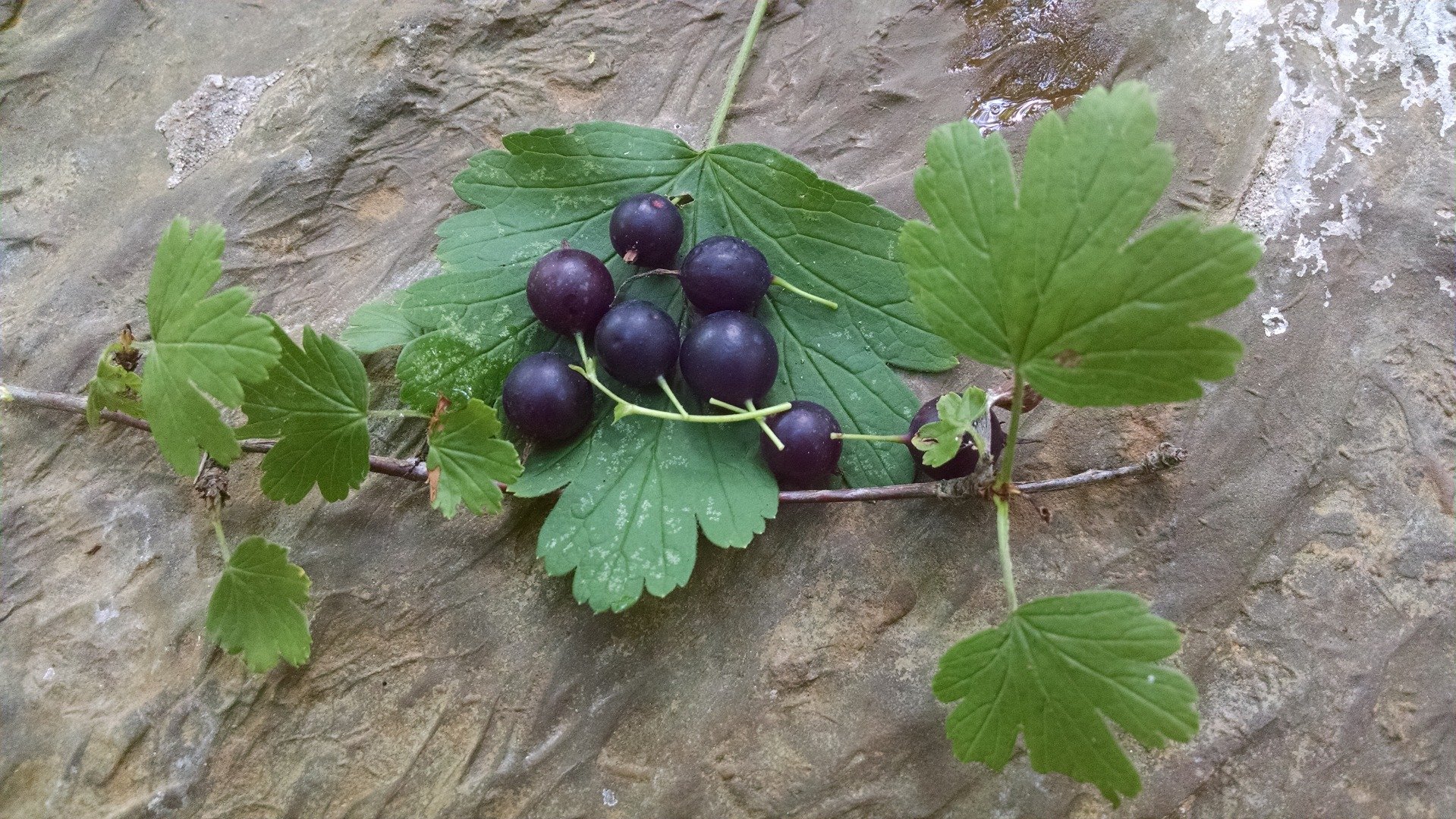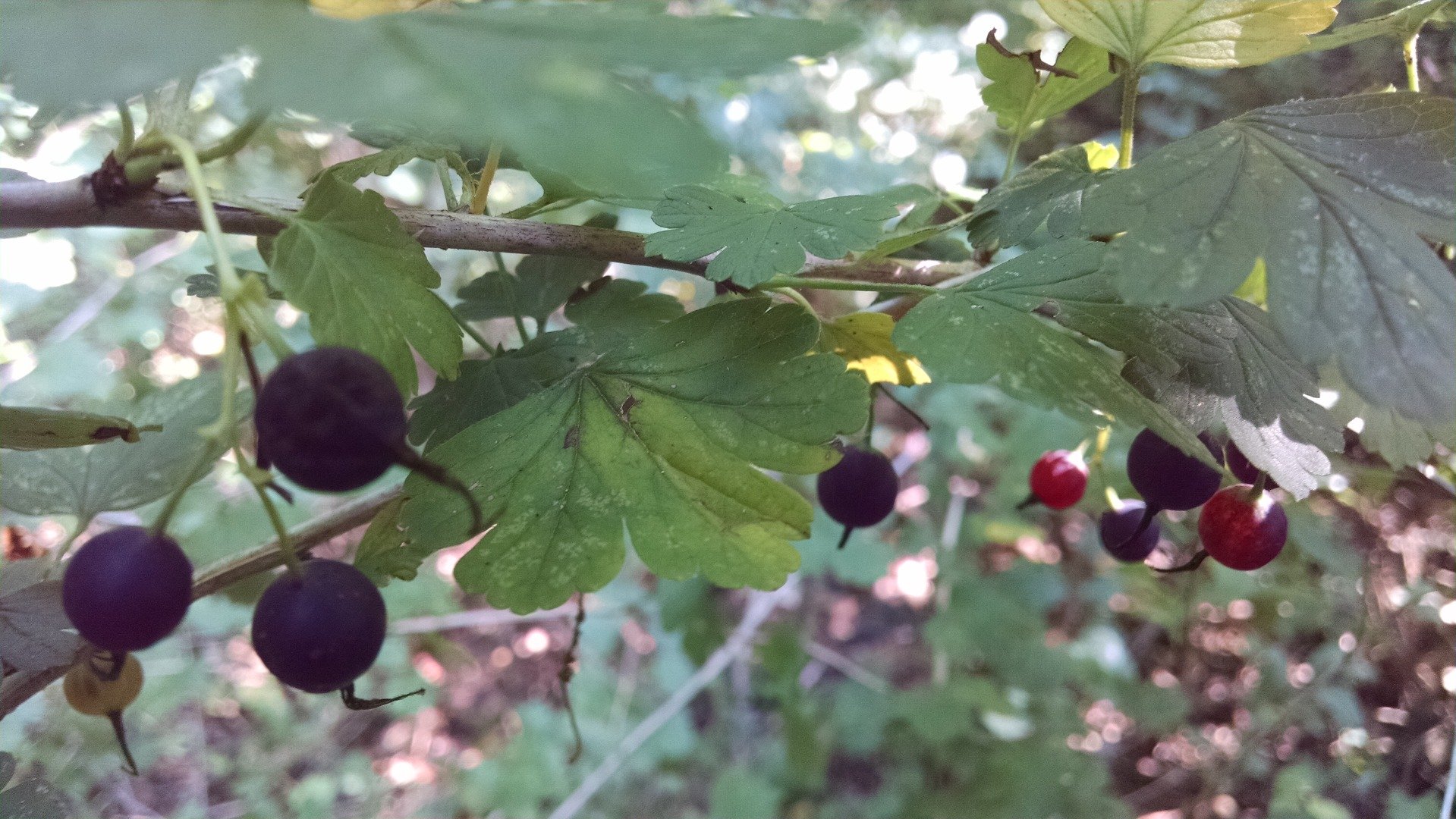
Gooseberries are members of the Ribes family which means that they are related to currants. I was personally only introduced to the plant after moving to Arkansas, though others are familiar with the species in other places that I have lived. The American Gooseberry bushes that I have located after being shown what they look like have all bee found as an under-story bush growing on the forest floor under the canopy. I plan on using them as I begin my permaculture journey of creating my own food forest for my family.
The bushes I have found are generally less than 5 feet tall, though many of the branches may be 6-8 feet long, bending over and even re-rooting themselves from the tip. Since gooseberries can root themselves very easily, they are great for transplanting and propagating, although this quality can make them difficult to harvest when left unchecked in the wild, since they can produce a sprawling thicket. The other difficult characteristic related to harvesting in the thorns, which I consider to be similar to those of a raspberry bush. The leaf is distinct, as the images demonstrate, making the species easy to identify and locate even when they are not fruiting. If you think you've found one in the off-season, make sure to check back later during harvest to confirm your suspicion. The fruit starts off light green in color, changing to magenta and finally a dark purple when ripe. The flavor is difficult to describe, but is certainly not as strong as the flavor of the related currants. The scientific name of the American Gooseberry is Ribes Hirtellum.
Note: The Jostaberry, which has been growing in popularity since the late seventies when it was bred in Germany, is another member of the Ribes family that was created by crossing Gooseberries and Currants.
#steem #nature #survival #prepping #edibles #prepper

